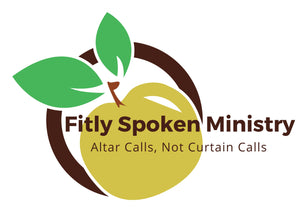Teach Me Thy Way, O Lord
New Convert’s Guide to Exploring the New Testament Epistles
By Terry Vik
Where should you begin studying the bible?
Beginning your walk with God can be confusing and sometimes terrifying. But it need not be. There is even scripture that tells us to back off, take it slow and allow God to work within us to help us understand His word.
• “For precept must be upon precept, precept upon precept; line upon line, line upon line; here a little, and there a little.”
• “Work out your own salvation, with fear and trembling.”
• “The meek will he guide in judgment: and the meek will he teach his way.”
• “Work out your own salvation, with fear and trembling.”
• “The meek will he guide in judgment: and the meek will he teach his way.”
There are no bible references given, because I want you to focus on the words, not the books, chapters or verses.
The words above tell me to take my time, but keep working. To be in awe of what I am taught and humbled that God himself is my teacher. I realize that each little bit I do understand He will use to build new levels of understanding and comprehension.
The bible is many things. It is:
• God’s love letter to us
• God’s guide book to eternity with him
• God’s warnings of wrong doing and errant paths
• God’s encouragement to the sad
• God’s “pat on the back” to the successful
• God’s love letter to us
• God’s guide book to eternity with him
• God’s warnings of wrong doing and errant paths
• God’s encouragement to the sad
• God’s “pat on the back” to the successful
Find a translation of the bible you are comfortable reading. King James? New King James? American Standard? New International Version? The list of options is seemingly endless. There is a difference between ‘versions’ and ‘translations’, but for now I suggest finding a New King James Version. I like the King James Version, but then I love to read Shakespeare! If you would like, it wouldn’t hurt to have something like the Good News Version on hand just to compare and to help yourself understand passages with which you may struggle.
… So I repeat - Where should you begin in your study of scripture?
Keep in mind that there is no incorrect way.
If you want to start in Matthew and read straight through to Revelation, then go for it! Not a thing wrong with that method.
Another way would be to study them chronologically; in the order they were written. (As best we can deduce). I actually recommend this as a method, but I suggest saving it for later once you are more familiar with the books, authors and the events within.
You can study them alphabetically, draw a title from a hat or read them in reverse order. As long as you are serious in your study, the methodology is irrelevant. God will open your eyes to his words.
• “Study to shew thyself approved unto God, a workman that needeth not to be ashamed, rightly dividing the word of truth.”
What method are we going with here? – Milk to Meat.
This book is going to focus on the Epistles. Of the 27 books of the New Testament:
- 5 of them are historical,
- 1 is prophetic and
- 21 of them were written to the church as a whole or to individuals within the church. These writings are called The Epistles.
They were gathered together and organized hundreds of years ago, but I am going to rearrange them in a way that I believe will give you a firm grasp of what a walk with Christ means. I have communicated with pastors all across the country and given them a summary of each book, with emphasis on the key element of each book. I asked them to list the books in order that they see of greatest benefit to a new convert beginning his or her walk with Christ.
Using this information as a guide this book was created so that you, as a new convert, can grasp the wonder that is called the Bible. And that line upon line and precept upon precept you can build your relationship with Christ, to whom glory be forever and ever!
Although the focus will be on the epistles suggested readings from the other 6 New Testament books and parts of the Old will be included. There will also be nuggets of fun facts, historical references and maps and charts to guide you in your journey. At the end of each suggested reading will be a series of questions about the information within that section’s reading.
Be sure to go at your own pace. This is not a “rush and read” bible study. Whether you complete it in three months or a year is irrelevant. Be diligent, be steady. “Line upon Line, here a little, there a little.”





